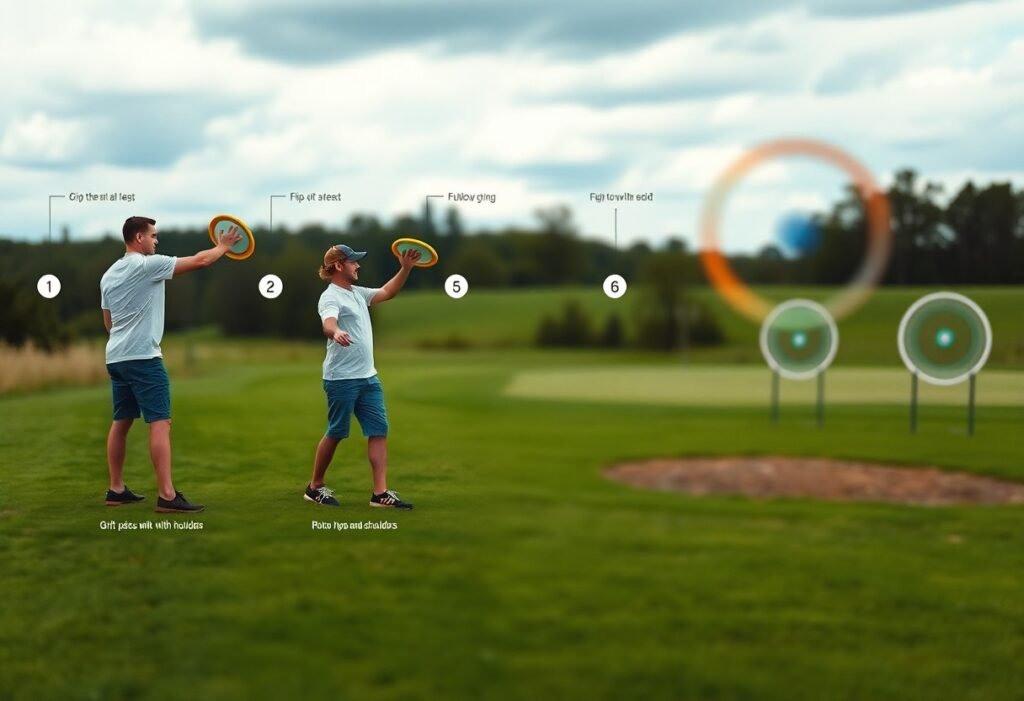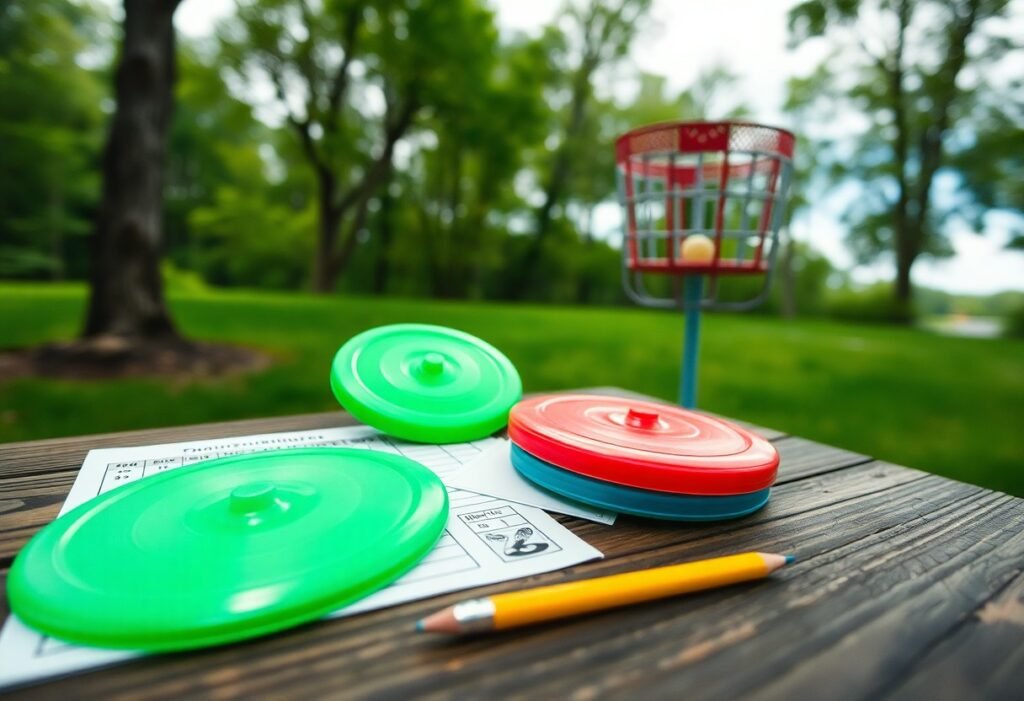There’s a growing recognition of how disc golf positively impacts local parks and stimulates environmental preservation efforts. As you engage with this sport, your participation helps advocate for the maintenance and improvement of green spaces. It’s vital to understand how responsible play can influence ecosystems, promote sustainable practices, and engage community interest in protecting natural resources. By championing disc golf, you become part of a movement that values both recreation and the environment, ensuring these spaces thrive for generations to come.
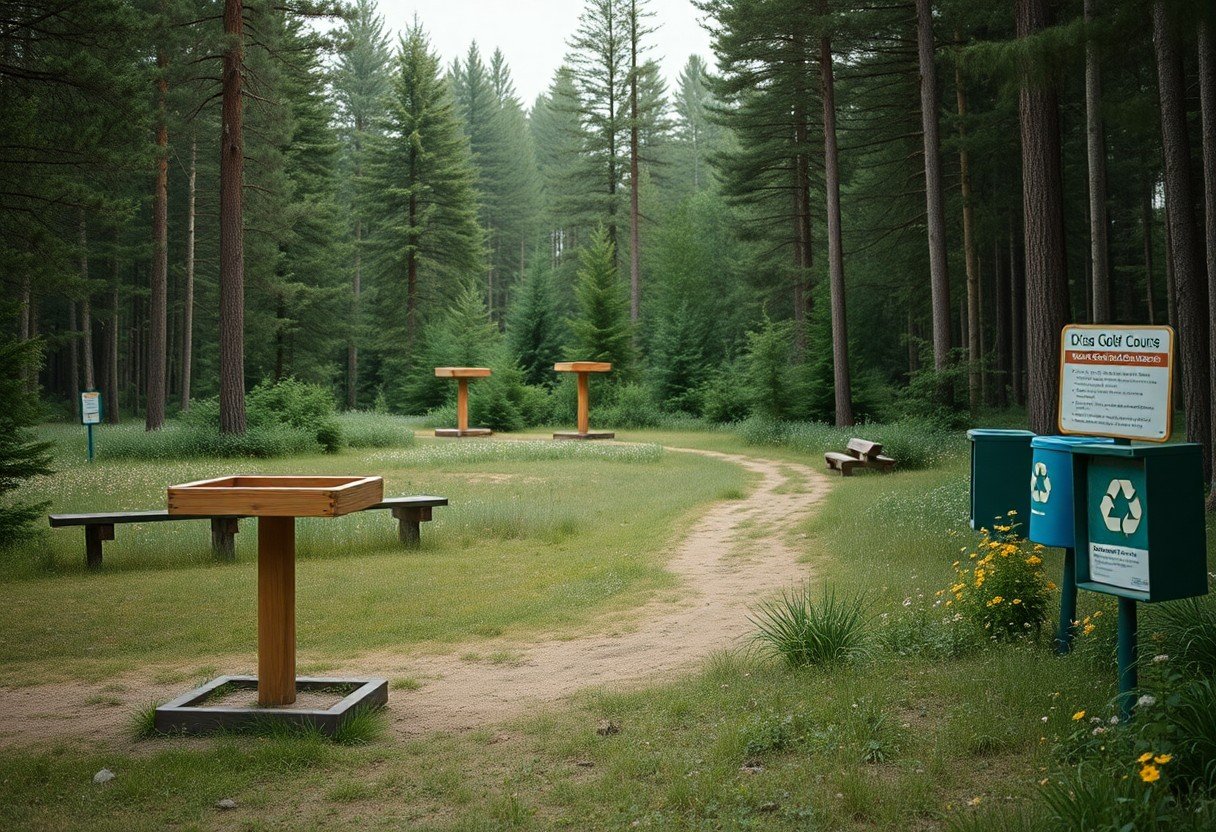
Key Takeaways:
- Disc golf courses can enhance park ecosystems by promoting biodiversity and responsible land management.
- Integrating environmentally sustainable practices into course design minimizes ecological footprints and preserves natural habitats.
- The sport encourages community involvement in conservation efforts, fostering a culture of environmental stewardship.
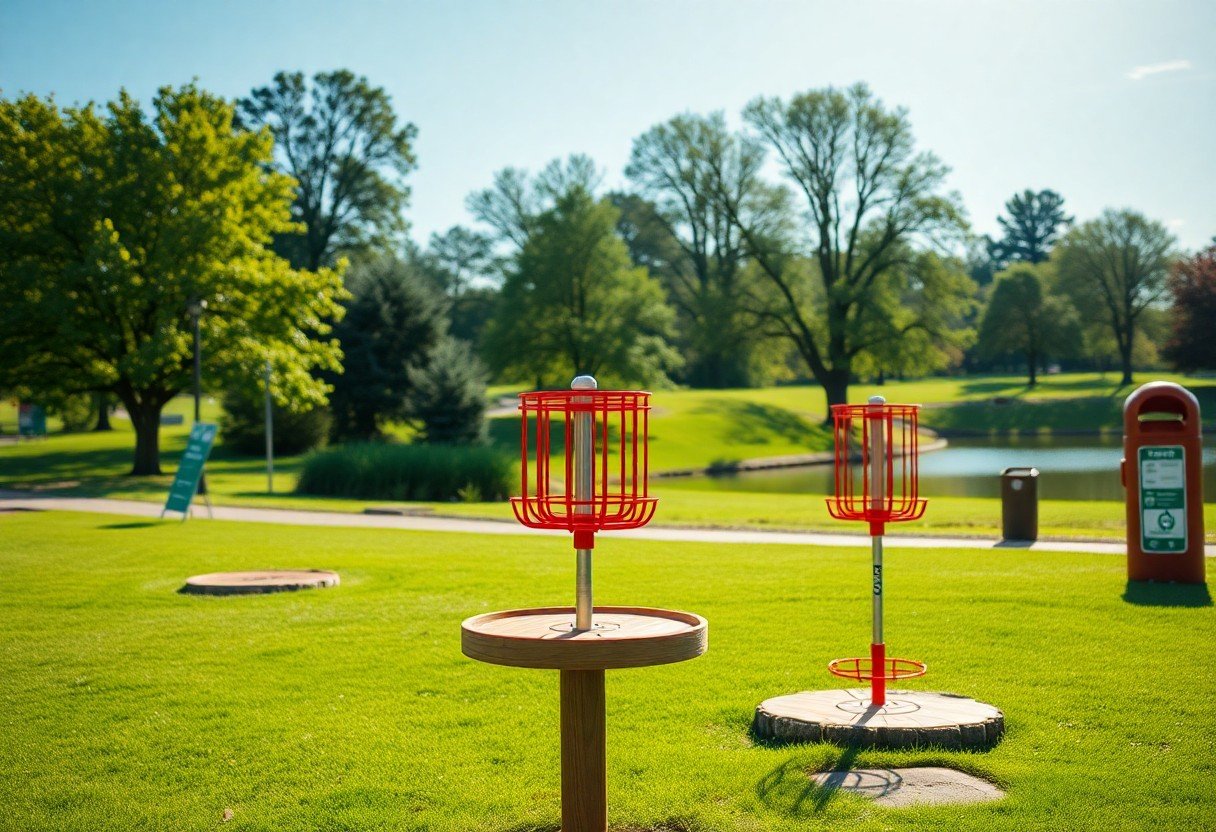
The Importance of Environmental Awareness in Disc Golf
Understanding the Ecosystem
When playing disc golf, you engage directly with the environment around you. Understanding the ecosystem involves recognizing the interconnectedness of plants, animals, soil, and water in the areas where you play. By being aware of these relationships, you can appreciate how your presence and actions affect the habitat, promoting a healthier environment for all.
Natural Resources and Safeguarding Wildlife
Responsible disc golf players actively contribute to the stewardship of local natural resources and wildlife. By following best practices, you can help protect the habitats of native species and ensure that the ecosystems within the parks remain vibrant and sustainable. This commitment fosters a shared responsibility among players to safeguard these precious areas.
In many park settings, disc golf courses can serve as vital habitats for diverse wildlife. Adopting a conscious approach, such as avoiding areas with nesting birds or limiting disturbance during sensitive seasons, safeguards not only the immediate environment but also the health of entire ecosystems. Engaging with parks in a mindful manner allows you to coexist harmoniously with local flora and fauna.
Impact of Disc Golf on Local Flora and Fauna
Your participation in disc golf can significantly impact local plant and animal life. While courses are designed to coexist with natural landscapes, wear and tear from foot traffic can lead to soil erosion and habitat degradation. Understanding these challenges allows you to adopt practices that minimize these effects, contributing positively to the environment.
Studies have shown that areas surrounding disc golf courses can experience shifts in vegetation and animal behavior. The introduction of footpaths through native flora can lead to decreased biodiversity and disrupt local wildlife. By advocating for proper course design and management, you can mitigate detrimental effects and promote sustainable practices that support both disc golf and the natural environment in your community.
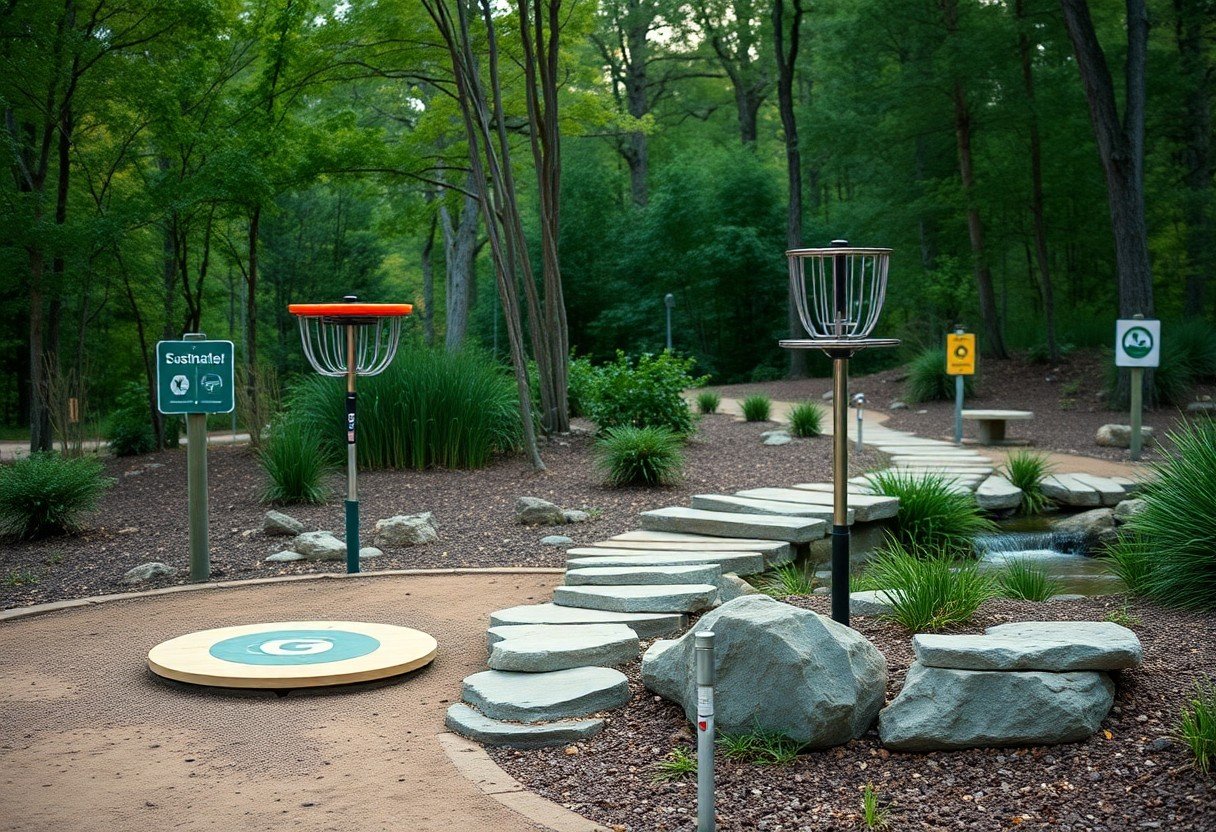
Sustainable Course Design
Principles of Eco-Friendly Course Design
In eco-friendly course design, you focus on integrating disc golf into the natural landscape while preserving the surrounding ecosystem. Key principles include minimizing materials usage, designing for water drainage, and ensuring wildlife habitats remain undisturbed. This approach not only enhances players’ experiences but also works to protect biodiversity and maintain the integrity of the environment.
Minimizing Land Disruption
Prioritizing minimal land disruption is imperative to sustain the natural ecosystem. You can achieve this by designing courses that follow existing contours and using natural barriers like trees and hills. This method encourages a more organic development that requires fewer alterations, allowing for efficient preservation of flora and fauna.
By utilizing existing terrain features, your course can blend seamlessly into the landscape, reducing the need for heavy machinery and extensive soil disturbance. For example, courses designed in harmony with the topography can retain natural water flow and support local wildlife habitats. Engaging in careful placement of tees and baskets helps keep construction impacts low, ensuring that both the recreational needs of players and the ecological needs of the area are met.
Utilizing Native Plants and Sustainable Materials
Incorporating native plants and sustainable materials is a vital component of environmentally conscious course design. You can reduce the need for irrigation and maintenance by choosing vegetation that naturally thrives in the local climate. Additionally, using recycled or locally sourced materials for construction minimizes your carbon footprint.
By emphasizing the use of native plants, your course will foster biodiversity and create a habitat that supports local wildlife. For instance, landscaping with native species can provide crucial nutrition for pollinators and help maintain soil health. Furthermore, employing sustainable materials like reclaimed wood and recycled plastic not only aligns with eco-friendly principles but can also reduce long-term costs associated with maintenance and replacement, offering a win-win scenario for both you and the environment.
Parks and Public Spaces: A Home for Disc Golf
Role of Public Parks in Community Wellness
Public parks serve as important venues for promoting community wellness. They offer space for physical activity, social interactions, and mental relaxation. Engaging in disc golf not only encourages you to enjoy the outdoors, but it also helps reduce stress and improve overall health. Studies show that access to recreational spaces leads to higher physical activity levels, fostering both individual well-being and community cohesion.
Collaborating with Park Services for Preservation
Collaborative efforts between disc golf communities and park services can significantly enhance environmental preservation. When you partner with park management, you can develop maintenance plans that prioritize biodiversity conservation and sustainable land use practices. This cooperation extends to organizing clean-up events, habitat restoration projects, and educational initiatives that raise public awareness about the importance of preserving natural spaces.
Your collaboration with park services aids in implementing effective preservation strategies. For instance, by engaging in regular maintenance, such as clearing debris and preventing soil erosion, you contribute to keeping the course safe and enjoyable. Additionally, park services can provide valuable insights on best practices for sustainable landscaping and habitat protection that align with local environmental goals, which enhances the overall health of the ecosystem surrounding the disc golf course.
Benefits of Disc Golf Courses in Urban Areas
Disc golf courses in urban settings offer a plethora of benefits, including improved accessibility to green spaces and enhanced community interaction. By introducing a low-cost, low-impact sport, you make outdoor recreation more attainable for diverse populations, fostering a sense of belonging and community pride.
Moreover, incorporating disc golf into urban landscapes can reduce heat islands, improve air quality, and create wildlife habitats. As these courses often utilize underutilized land, such as vacant lots or unused park areas, they can transform these spaces into vibrant recreational hubs. Additionally, studies have shown that areas with disc golf courses experience increased foot traffic, leading to stronger local economies and improved public safety through increased community engagement.
Environmental Education through Disc Golf
Teaching Conservation Awareness
Disc golf enthusiasts have a unique opportunity to raise conservation awareness among players and visitors. By integrating educational signage about local ecosystems and responsible practices at courses, you can foster a deeper understanding of the natural world. Workshops and community events can also highlight the importance of preserving green spaces, engaging players in discussions about sustainability and their role in maintaining the environment.
Community Engagement and Volunteering
Getting involved in local conservation efforts can transform your disc golf experience. By participating in organized clean-up events and habitat restoration projects, you contribute to the health of the environment while fostering a sense of community among fellow players. Such initiatives not only enhance the courses but also create lasting connections among participants, reinforcing the values of teamwork and stewardship.
Many disc golf clubs host regular volunteer days where members come together to clean up their local courses, plant trees, and remove invasive species. Participating in these activities not only improves the playing environment but also instills a strong sense of responsibility toward natural surroundings. Engaging in community-driven efforts helps you develop ties with other players, encouraging camaraderie and shared environmental goals.
Developing Programs for Schools and Youth
Engaging youth in disc golf offers a powerful avenue for fostering environmental stewardship. By developing programs in schools, you guide students through hands-on experiences that emphasize the importance of nature conservation while introducing them to the sport. These initiatives encourage young players to understand their environmental impact and motivate them to connect with their surroundings.
Creating opportunities for young people to learn about sustainability through disc golf can make a lasting impression. Programs can include field trips to local courses, eco-educational workshops, and youth leagues that feature environmental themes. By emphasizing the relationship between sport and nature, you nurture a new generation that values preservation, ensuring the future of both disc golf and our planet.
Waste Management and Pollution Reduction
Promoting Leave No Trace Principles
By embracing the Leave No Trace principles, you can significantly reduce environmental impact while enjoying your disc golf experience. This means always packing out what you bring in, staying on designated paths, and minimizing your disturbance to wildlife and vegetation. Following these practices not only protects the natural beauty of disc golf courses but also sets a positive example for fellow players.
Recycling and Proper Waste Disposal Practices
Implementing effective recycling and waste disposal practices on the course is imperative. You can encourage event organizers to set up clearly marked recycling and trash bins, ensuring players dispose of materials responsibly. This reduces contamination and increases the chance of recyclable items being processed correctly.
Consider collaborating with local organizations to host clean-up days, where players come together to collect litter and promote proper recycling. You can also use biodegradable bags for waste and campaign for the availability of composting options at courses. The more you advocate for sustainable practices, the greater community awareness and participation will become.
Reducing Plastic Use in Equipment and Apparel
Choosing to reduce plastic use in your disc golf equipment and apparel can lead to a more sustainable sport. Selecting discs made from eco-friendly materials and supporting brands that prioritize sustainability can significantly lessen your environmental footprint.
Seek out manufacturers who offer products made from recycled materials or biodegradable options. You might also consider second-hand gear, which helps reduce waste in landfills. Even apparel choices matter; opt for brands that employ sustainable production methods and materials. By making informed choices, you contribute to a culture of sustainability within the sport and encourage manufacturers to adopt greener practices.
Advocating for Policy and Preservation
Importance of Policy Advocacy in Environmental Efforts
Engaging in policy advocacy empowers you to influence regulations that impact the environment. Your efforts can shape necessary decisions regarding land use, conservation funding, and sustainability initiatives. Strong policies can protect natural habitats, ensuring that both wildlife and disc golf communities thrive side by side.
Collaborating with Environmental Organizations
Joining forces with environmental organizations can amplify your impact on preserving ecosystems while promoting disc golf. These collaborations provide resources, expertise, and networks that can enhance conservation initiatives. Partnerships can lead to innovative approaches in course design and maintenance that respect nature while allowing you to enjoy your sport.
By collaborating with environmental organizations, you gain access to workshops, funding opportunities, and volunteer events aimed at fostering eco-friendly practices. Many of these organizations have extensive experience in advocacy and restoration, equipping you with the tools needed to implement sustainable practices at your local courses. Working together not only strengthens community ties but also emphasizes the positive role disc golf can play in environmental stewardship.
Case Studies: Successful Conservation Efforts Related to Disc Golf
Several inspiring case studies illustrate the successful merger of disc golf and environmental conservation. These examples demonstrate how your involvement in the sport can lead to powerful conservation results.
- Lakeview Disc Golf Course: Implemented a conservation program preserving 50 acres of wildlife habitat while retaining course functionality.
- Greenway Disc Golf Initiative: Partnered with local conservation groups to plant 1,000 trees, reducing erosion and improving air quality.
- Parks & Recreation Collaboration: Collaboratively installed 8 rain gardens to manage runoff, benefiting both the course and adjacent ecosystems.
These case studies reveal tangible outcomes driven by disc golf advocacy. The Lakeview Disc Golf Course serves as a prime example of preserving 50 acres of vital habitat, showcasing the possibility of coexistence between recreational spaces and nature. The collaborative efforts of the Greenway Disc Golf Initiative in planting 1,000 trees highlight your active role in enhancing urban environments. Furthermore, the practical solutions applied by local Parks & Recreation in installing 8 rain gardens demonstrate how small changes can lead to significant positive impacts on water management and ecosystem health.
Summing up
Now, understanding the environmental aspects of disc golf can enhance your experience while promoting the preservation of parks. By engaging with sustainable practices and advocating for responsible land use, you contribute positively to the ecosystems that host your favorite courses. You can learn more about the potential environmental concerns in this sport at The Biggest Environmental Worries in Disc Golf – Parked. Your awareness and actions can make a significant impact on maintaining the natural beauty of these spaces.
FAQ
Q: What are the environmental benefits of disc golf?
A: Disc golf promotes outdoor activity, encourages the use of green spaces, and fosters community engagement in conservation efforts. It also contributes to habitat preservation by maintaining parks and natural areas.
Q: How does disc golf affect local ecosystems?
A: Disc golf courses are designed to blend into natural landscapes, minimizing disruption to wildlife. Well-maintained courses help in protecting native flora and fauna while providing a recreational space for enthusiasts.
Q: Are disc golf courses environmentally sustainable?
A: Many disc golf courses use sustainable practices such as low-maintenance landscaping, natural materials, and responsible water use. These practices reduce the ecological footprint and enhance biodiversity on and around the course.
Q: What role do disc golf players have in park preservation?
A: Players can contribute by respecting park rules, picking up litter, and participating in local conservation efforts. Their advocacy for preservation helps maintain and improve the quality of the parks they use.
Q: Can disc golf help in park funding and maintenance?
A: Yes, disc golf can attract visitors to parks, increasing revenue through fees and tourism. This financial support can be allocated to park maintenance and enhancement projects focused on preservation.
Q: Are there any challenges associated with disc golf and the environment?
A: Challenges include potential damage to sensitive areas and increased foot traffic, which can lead to soil erosion. Proper course design and management are crucial to mitigate these impacts.
Q: How can communities enhance the environmental impact of disc golf?
A: Communities can organize clean-up events, plant trees, and educate players about environmental stewardship. Collaborating with local organizations can further promote eco-friendly practices within the sport.







